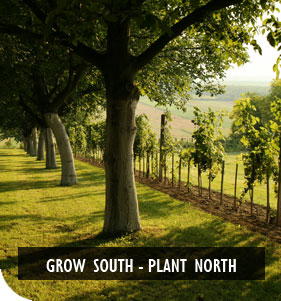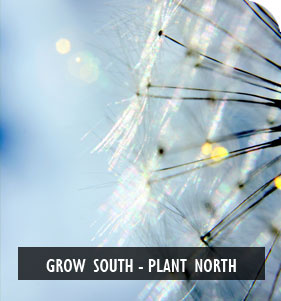
Conservation
is our growing business
Home Creek Nursery continues to encourage, promote and provide for the conservation and rehabilitation of our natural environment. Our primary objective is to produce hardy, ecologically sourced native plants.
Home Creek Nursery believes in ECO-SOURCING - sourcing indigenous New Zealand plants and propagating material from natural strands of vegetation derived from naturally occurring parents. Whenever we can Home Creek Nursery supplies suitable eco-sourced plant material. We do not, however, always have stock available from every region. In those cases we will offer you the choice of alternatively sourced plant stock most suited to your climate and conditions.
Home Creek Nursery has a 'Quality Assurance Programme' in place. We qualify this by saying we have developed a successful system of propagating, monitoring and documentation techniques which are computerised. This allows for both the production of high quality plants and for ensuring that all stock information is traceable at all stages of development. The following is a summary of this quality management system:
Enough seed is collected from sites to allow for expected losses in propagation and is checked for viability.
Seed information is recorded on a "Seed Card" which is used as an on-going progress record of each seed batch. At collection stage the species, site, date of collection and collector's name are recorded, along with any relevant comments. This and subsequent information forms a database for continuing improvement in collection and propagation techniques.
 Seed is taken to Home Creek Nursery, where it is cleaned in a manner appropriate to the species. At this stage the batch receives an identity number, which is recorded on the seed card and in a register. The seed is placed in aerated bags with a mixture of peat and crusher dust and refrigerated at 2 degrees Celsius for stratification.
Seed is taken to Home Creek Nursery, where it is cleaned in a manner appropriate to the species. At this stage the batch receives an identity number, which is recorded on the seed card and in a register. The seed is placed in aerated bags with a mixture of peat and crusher dust and refrigerated at 2 degrees Celsius for stratification.
These bags are individually labelled with all the details on the Seed Card, for identification. Temperature is monitored daily and the bags are aerated fortnightly and checked for problems such as early germination or rot.
After appropriate stratification time (which will vary according to species), the seed is broadcast on to seed trays and covered. The bench temperatures are monitored daily. Sowing and germination dates are recorded on the Seed Card.
After germination the plants are hardened off in another glass house before being pricked out and transferred to growing tubes, root trainers or propagation pots as appropriate to the species. At this stage all plants are checked for health, vigour and root structure, with any sub-standard plants being discarded. The remaining plants are then fertilized as appropriate and left in a glass house for approximately six weeks while their root structure develops. They are then hardened off in cold frames for around three weeks and then kept in a shade house for six to twelve months until big enough to be bagged on. The progress and condition of these plants is regularly monitored over this period.
The plants are bagged in potting mix and given labels recording species, genetic area, date pricked out, date bagged and batch number. Pricking out and bagging out dates are also recorded on the seed card. All plants are then lined out in groups according to their specific collection areas and are now ready for transfer to site.


